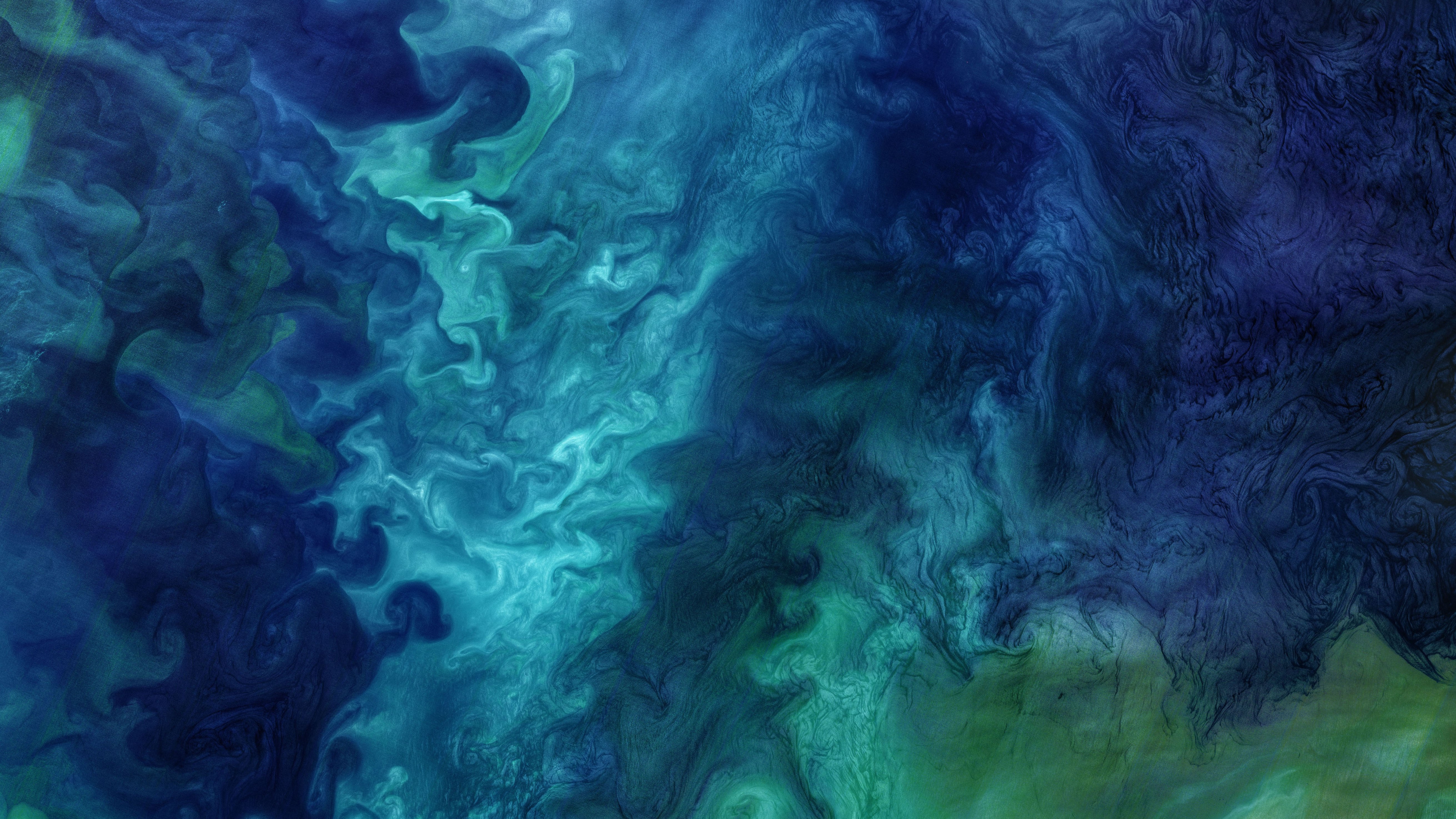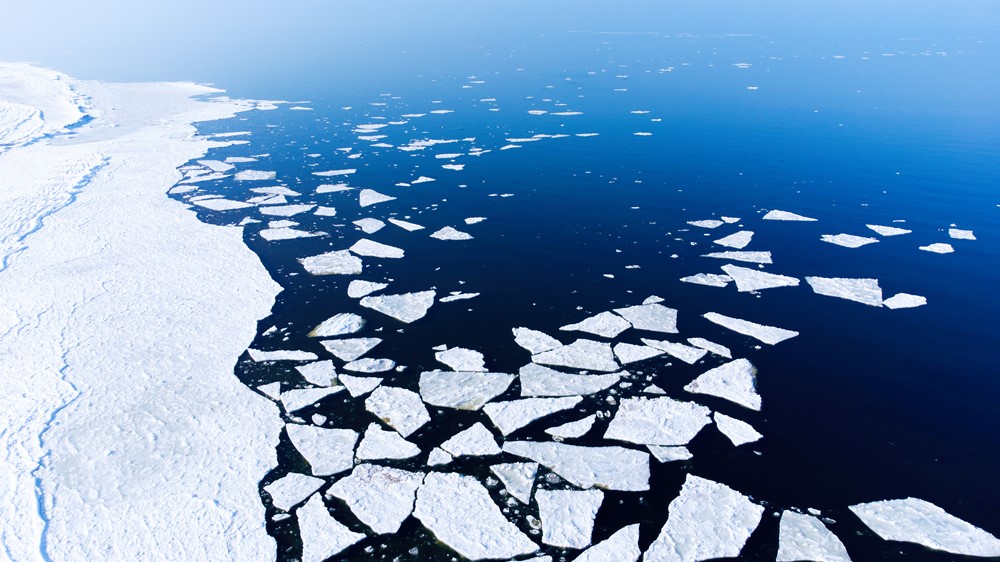Logic-defying 'bottom blooms' could sustain hidden ecosystems in Arctic and Antarctica
A pair of new studies has revealed 'highly unlikely' phytoplankton blooms appearing near the seafloor and under sea ice at both Earth's poles.

Logic-defying phytoplankton blooms have been discovered lurking beneath the ocean's surface in both of Earth's polar regions, two unrelated new studies have revealed. The highly unlikely "bottom blooms," which grow near the seafloor in the Arctic and below sea ice in Antarctica, could support hidden ecosystems that scientists know nothing about.
Phytoplankton are tiny photosynthetic algae that account for around half of the primary production — the conversion of sunlight to organically available energy — in Earth's oceans and help to prop up the marine food web. Phytoplankton blooms, which are often visible from space as beautiful green swirls on the ocean's surface, occur when the algae rapidly reproduce due to an overabundance of available nutrients. However, phytoplankton also require sunlight, which limits blooms to the upper layer of the ocean, where sunlight is strongest.
The Arctic and Antarctica are home to some of the most nutrient-rich waters in the world and support massive phytoplankton blooms during their respective summer months, when sea ice is at its minimum extent and sunlight can reach more of the ocean's surface. But as sea ice builds up in the wintertime, the blooms lose access to sunlight and start to die.
However, a pair of new studies published by two different research teams has revealed that some of these blooms are either surviving in deeper waters after the sea ice thickens, as is the case in the Arctic, or starting to bloom beneath the sea ice before it begins its seasonal melt, as seen in Antarctica.
Related: Discovery of 'hidden world' under Antarctic ice has scientists 'jumping for joy'
Both studies suggest that climate change may be playing a key role in the emergence of these bottom blooms, by thinning out sea ice, increasing the amount of time the oceans are ice-free and increasing the amount of sunlight that reaches deeper waters.
Arctic blooms
In 2016, a scientific expedition conducting routine samples of the Arctic water column in the Chukchi Sea, between Siberia and Alaska, found an abundance of phytoplankton in waters near the seafloor. Normally, phytoplankton that have sunk down to this depth have either died or become almost completely inactive, but these algae were still photosynthesizing at a normal rate, which suggested that they could still be blooming.
Sign up for the Live Science daily newsletter now
Get the world’s most fascinating discoveries delivered straight to your inbox.
After the discovery of this potential bottom bloom, Takuhei Shiozaki, a member of the expedition and a microbial oceanographer at the University of Tokyo, returned with a new team of researchers to take more samples. They later carried out a series of laboratory experiments to see how the algae were able to survive at this depth.
The results, which were published Sept. 27 in the journal Global Change Biology, revealed that the bottom-dwelling phytoplankton were able to survive even when the light was only 1% as strong as it was at surface levels. The researchers suspect that because sea ice is forming later in the year as a result of climate change, the phytoplankton that sink to the seafloor still receive enough light to continue blooming.

However, more samples from the Arctic are required to understand the full extent of bottom blooms in the region.
"We still don't know the total production and the amount of phytoplankton 'seed' on the seafloor that [could] be the origin of a bottom-associated bloom," Shiozaki told the American Geophysical Union's magazine, Eos.
Antarctic blooms
More recently, a study published Nov. 17 in the journal Frontiers in Marine Science revealed that phytoplankton can also bloom beneath Antarctic sea ice.
Scientists had previously thought that Antarctic sea ice — much like ice in the Arctic — would be too thick to allow enough light through to sustain an algal bloom. But after hearing about some of the preliminary results from the Arctic study, a separate team of researchers suspected that the algae in Antarctica also might be able to bloom beneath sea ice before the ice began to melt in the summer.
The team used deep-diving floats to measure the amount of chlorophyll-a, the pigment used by algae and other plants during photosynthesis, in the water. They also measured how much light scattered through the water column, which is another indicator of phytoplankton.
Related: Enormous river discovered beneath Antarctica is nearly 300 miles long
"We found that nearly all examples of floats profiling under Antarctic sea ice record increases in phytoplankton before sea ice retreats," study lead author Christopher Horvat, a mathematical oceanographer at Brown University in Rhode Island, said in a statement. "In many cases, we observed significant blooms."

The researchers are confident that these types of blooms are widespread in the region. "We found that 50% or more of the under-ice Antarctic might support under-ice blooms," Horvat said.
Hidden ecosystems
Phytoplankton form the foundation of the marine food web, so if they can bloom in areas where scientists previously assumed they could not, there may be other unknown populations of marine organisms in these areas possibly feeding off them.
"Higher trophic levels migrate to where the productivity is, and if it is under the ice, one might expect the food web follows," Horvat said, adding that more research is needed to tell for sure.
Bottom blooms could also play a key role in the local carbon cycle, because phytoplankton absorb carbon from the water during photosynthesis.
"Investigations of the carbon sequestration capacity of the Arctic Ocean have [so far] focused on surface processes," Shiozaki said. "However, assuming that carbon is actively fixed by phytoplankton in the subsurface, this process should be taken into account [as well]."

Harry is a U.K.-based senior staff writer at Live Science. He studied marine biology at the University of Exeter before training to become a journalist. He covers a wide range of topics including space exploration, planetary science, space weather, climate change, animal behavior and paleontology. His recent work on the solar maximum won "best space submission" at the 2024 Aerospace Media Awards and was shortlisted in the "top scoop" category at the NCTJ Awards for Excellence in 2023. He also writes Live Science's weekly Earth from space series.









